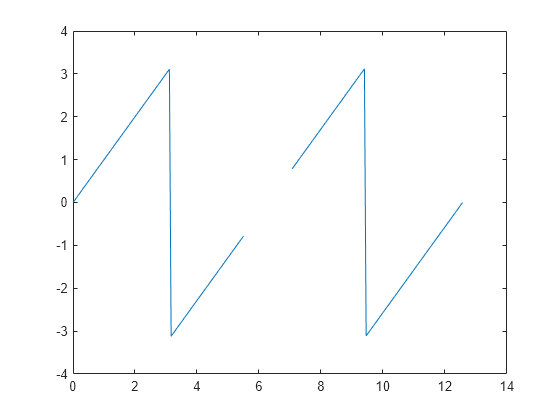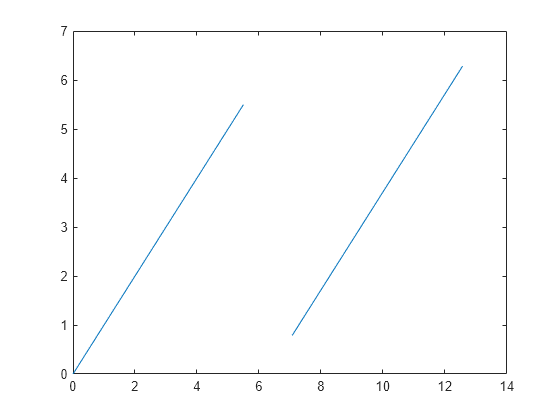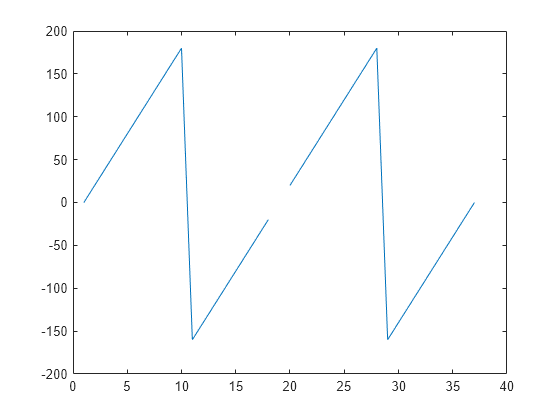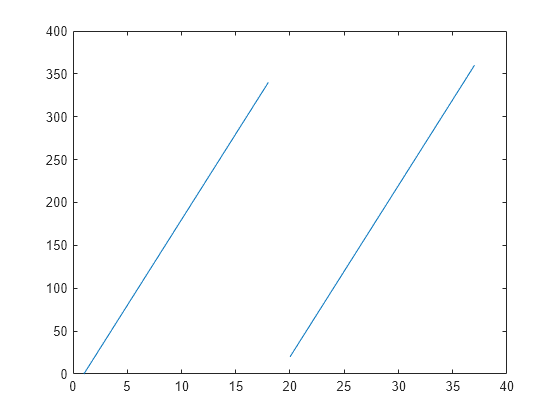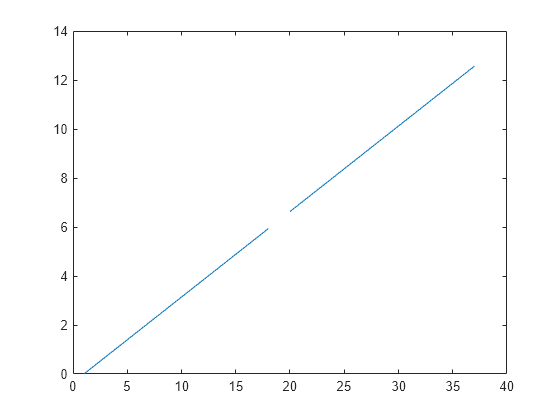unwrapMultipart
Unwrap angles with parts separated by NaN values
Description
Q = unwrapMultipart(P)P. This
syntax assumes the angle units are in radians. Whenever the jump between consecutive angles
is greater than or equal to π radians, the function shifts the angles by
adding multiples of ±2π until the jump is less than π.
When P includes multiple parts separated by NaN
values, the function unwraps each part independently. When P has only
one part, the result is equivalent to unwrap(P).
Q = unwrapMultipart(P,angleUnit)angleUnit of the angles in
P. When P contains angles in degrees, specify
angleUnit as "degrees". Whenever the jump between
consecutive angles is greater than or equal to 180 degrees, this syntax shifts the angles by
adding multiples of ±360 until the jump is less than 180. The default for
angleUnit is "radians", which specifies the units
as radians.
Examples
Input Arguments
Output Arguments
Version History
Introduced in R2007b

